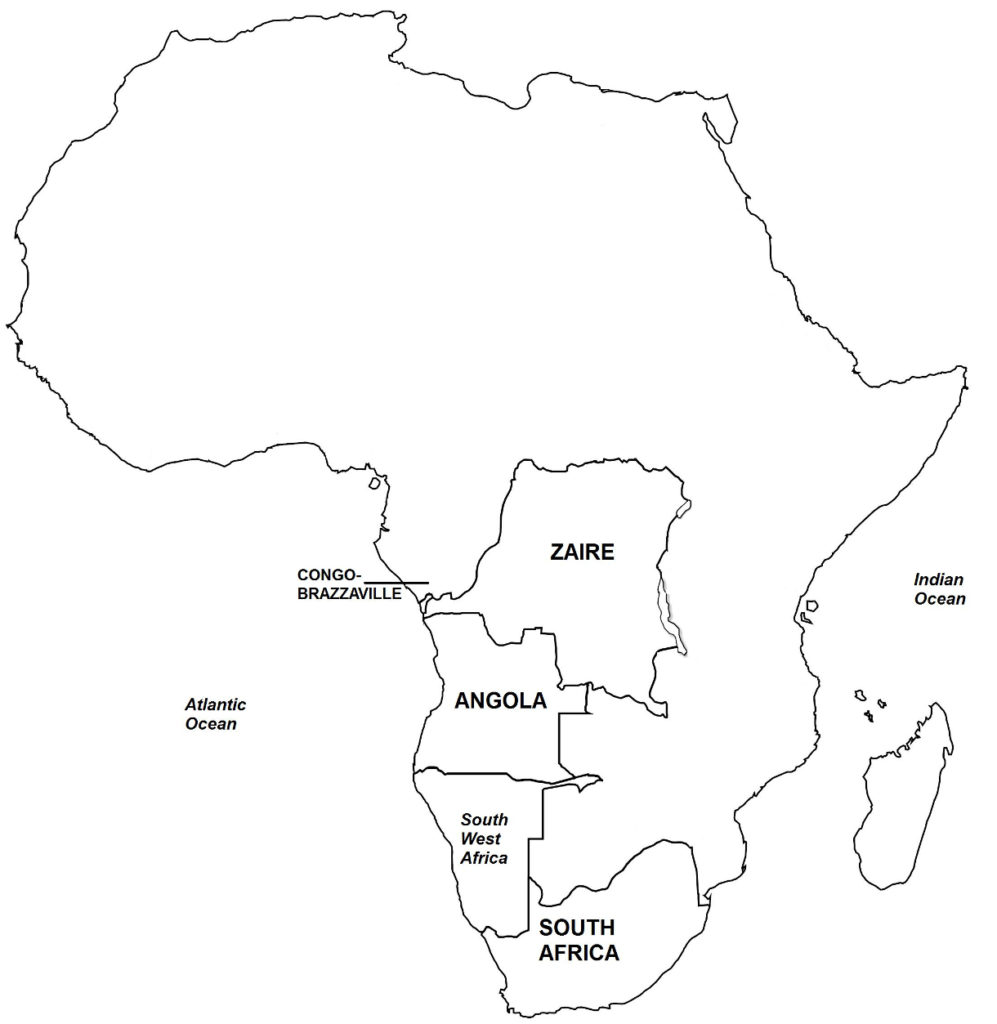On November 25, 1975, Cuban artillery batteries stopped a South African-led attack on Ebo during the Angolan War of Independence. The South Africans had planned to capture Luanda before Angola’s independence day, which had occurred two weeks earlier, on November 11. After failing in this objective, by December 1975, the South Africans and their Angolan allies had refocused their efforts to capturing as much territory as possible.

(Taken from Angolan War of Independence – Wars of the 20th Century – Volume 1)
Background After World War II, thousands of Portuguese immigrants settled in Angola. The world’s prices of coffee beans were high, prompting the Portuguese government to seek new white settlers in its African colonies to lead the growth of agriculture. However, many of the new arrivals settled in the towns and cities, instead of braving the harsh rural frontiers. In urban areas, they competed for jobs with black Angolans who likewise were migrating there in large numbers in search of work. The Portuguese, being white, were given employment preference over the natives, producing racial tension.
The late 1940s saw the rapid growth of nationalism in Africa. In Angola, three nationalist movements developed, which were led by “assimilados”, i.e. the few natives who had acquired the Portuguese language, culture, education, and religion. The Portuguese officially designated “assimilados” as “civilized”, in contrast to the vast majority of natives who retained their indigenous lifestyles.
The first of these Angolan nationalist movements was the People’s Movement for the Liberation of Angola or MPLA (Portuguese: Movimento Popular de Libertação de Angola) led by local communists, and formed in 1956 from the merger of the Angolan Communist Party and another nationalist movement called PLUA (English: Party of the United Struggle for Africans in Angola). Active in Luanda and other major urban areas, the MPLA drew its support from the local elite and in regions populated by the Ambundu ethnic group. In its formative years, it received foreign support from other left-wing African nationalist groups that were also seeking the independences of their colonies from European rule. Eventually, the MPLA fell under the influence of the Soviet Union and other communist countries.
The second Angolan nationalist movement was the National Front for the Liberation of Angola or FNLA (Portuguese: Frente Nacional de Libertação de Angola). The FNLA was formed in 1962 from the merger of two Bakongo regional movements that had as their secondary aim the resurgence of the once powerful but currently moribund Kingdom of Congo. Primarily, the FNLA wanted to end forced labor, which had caused hundreds of thousands of Bakongo natives to leave their homes. The FNLA operated out of Leopoldville (present-day Kinshasa) in the Congo from where it received military and financial support from the Congolese government. The FNLA was led by Holden Roberto, whose authoritarian rule and one-track policies caused the movement to experience changing fortunes during the coming war, and also bring about the formation of the third of Angola’s nationalist movements, UNITA.
UNITA or National Union for the Total Independence of Angola (Portuguese: União Nacional para a Independência Total de Angola) was founded by Jonas Savimbi, a former high-ranking official of the FNLA, over disagreements with Roberto. Unlike the FNLA and MPLA, which were based in northern Angola, UNITA operated in the colony’s central and southern regions and gained its main support from the Ovibundu people and other smaller ethnic groups. Initially, UNITA embraced Maoist socialism but later moved toward West-allied democratic Africanism.
War of Independence On February 3, 1961, farm laborers in Baixa do Cassanje, Malanje, rose up in protest over poor working conditions. The protest quickly spread to many other regions, engulfing a wide area. The Portuguese were forced to send warplanes that strafed and firebombed many native villages. Soon, the protest was quelled.
Occurring almost simultaneously with the workers’ protest, armed bands (believed to be affiliated with the MPLA) carried out attacks in Luanda, particularly in the prisons and police stations, aimed at freeing political prisoners. The raids were repelled, with dozens of attackers and some police officers killed. In reprisal, government forces and Portuguese vigilante groups attacked Luanda’s slums, where they killed thousands of black civilian residents.
In March 1961, Roberto led thousands of fighters of the UPA (Union of Peoples of Angola, a precursor organization of the FNLA) into northern Angola, where he incited the farmers to rise up in revolt. Violence soon broke out, where native farmers killed hundreds of Portuguese civilians, burned farms, looted property, and destroyed government infrastructures.
By May, the Portuguese government in Lisbon had sent thousands of soldiers to Angola. In a brutal counter-insurgency campaign, Portuguese troops killed more than 20,000 black civilians and razed the northern countryside. By year’s end, the colonial government had quelled the uprising and pushed Holden and his UPA followers across the border to the Congo. Some 200,000 black Angolans also fled to the Congo to escape the fighting and government retribution.
Portugal’s counter-insurgency methods were condemned by the international community. As a consequence of the uprisings, Portugal began to implement major reforms in Angola, as well as in its other African colonies. Forced labor was abolished, as was the arbitrary seizure of indigenous lands. Also for the first time, public education, health care, and other social services were expanded to the general population.
